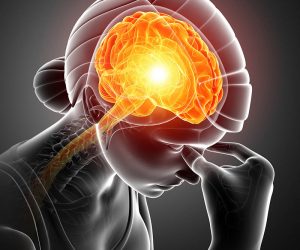 Traumatic Brain injury (TBI), also called acquired brain injury or simply head injury, occurs when a sudden trauma causes damage to the brain. Brain injury can vary from mild (concussion) to severe (deep coma).
Traumatic Brain injury (TBI), also called acquired brain injury or simply head injury, occurs when a sudden trauma causes damage to the brain. Brain injury can vary from mild (concussion) to severe (deep coma).
Worldwide, brain injury is the leading cause of death and disability. Each year, at least 1.5 million Americans sustain a TBI; this means an average of more than 4,000 individuals daily.
While one million of those patients are treated and released annually from hospital emergency rooms, more than 80,000 are left with lifelong disabilities, and TBI also claims more than 50,000 lives.
Although it seems society is more safety-conscious than ever, the number of TBIs among children may surprise you. For those less than 17 years of age, there are over 50,000 traumatic brain injury-associated hospitalizations in the United States each year. And among children under 14, over 2,500 deaths and over 400,000 emergency department visits occur annually.
In Canada, TBI is the leading cause of death and disability for people under the age of 45, and the Ontario Brain Injury Association reports that every year over 3,000 Ontario children sustain a TBI. In Toronto alone, over 1,700 children are hospitalized annually. Accordingly, annual hospital costs related to TBI admissions in Ontario are $164.4 million.
Although TBI in children and adolescents is common, they are less likely to be admitted to rehabilitation centers as in-patients compared to adults. Still, around 25 per cent of children and youth who sustain brain injury require rehabilitation services, including physical, occupational, and speech therapy.
Causes of TBI
According to the Centers for Disease Control, the leading causes of TBI are falls (28 per cent); motor vehicle collisions (20 per cent); struck by or against events (19 per cent), and assaults (11 per cent).
Disease sequlae
Anatomical changes from head injury may or may not be visible to the naked eye, depending on the exact mechanism and forces involved. Clinical symptoms vary greatly and in severity, making treatment difficult.
TBI injuries are typically classified as open or closed. Open injuries involve intrusion of the skull and underlying tissue in the brain (for example, bullets or knife punctures are considered open injuries). Conversely, closed injuries happen when the head is struck, strikes an object, or is shaken violently, causing rapid brain acceleration and deceleration. Nerves, blood vessels, and brain tissue can shear or be torn. This can cause concussions, contusions, intracerebral or subarachnoid bleeding, or hemorrhaging.
Memory and communication problems are also variable across children; the problems depend on an individual’s coping strategies, pre-injury ability, and the extent of the brain injury.
The effects of the TBI are generally greatest immediately following the injury. As brain swelling decreases, contusions may cause temporary damage. These types of damage are usually temporary and function is normally restored. Scientists and research tends to have difficulty accurately predicting the extent of long-term problems in the first weeks following traumatic brain injury.
One positive aspect of treating pediatric TBI is that children’s brains are more malleable than those of adults and therefore have greater flexibility. Consequently, children who suffer TBI have a better prognosis than adults with similar damage.


